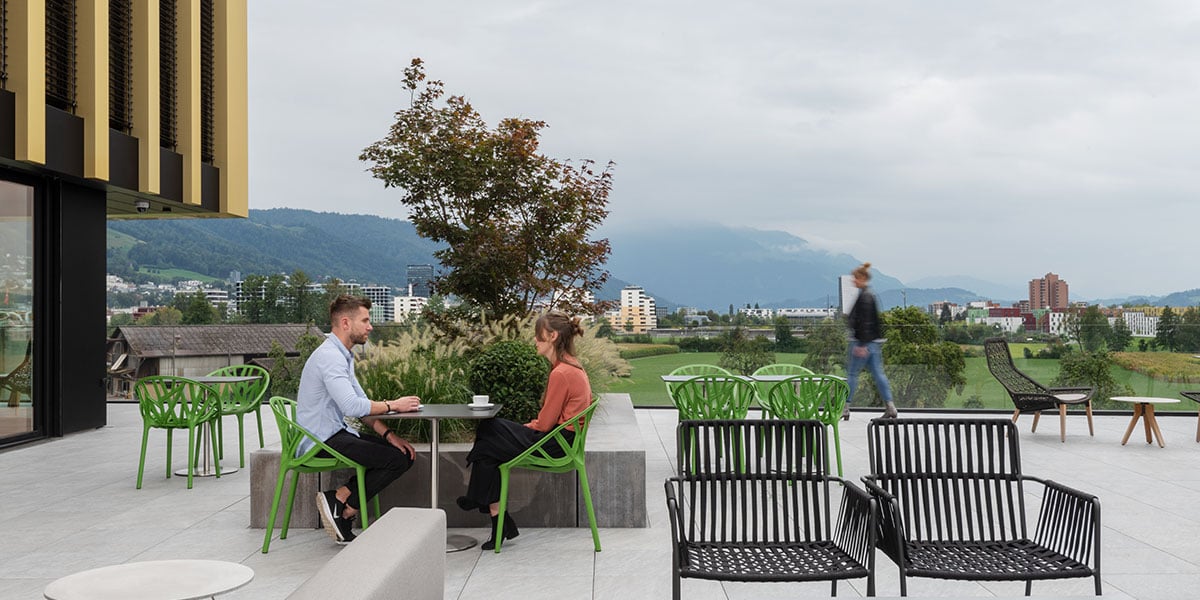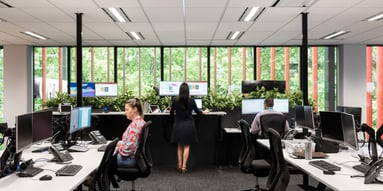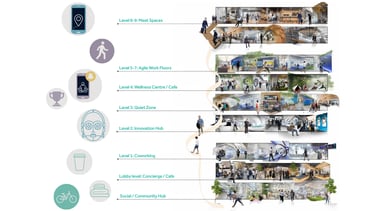Easy ways to improve mental health in the workplace

In this three-part mini-series, we’ll be providing tips and advice on improving wellness in the workplace. This includes physical wellbeing, environmental responsibility and mental health.
Showing you care pays off in productivity. Employers have a duty of care for the wellbeing of their people, which includes protecting and supporting their mental health. While that’s important to your team, it’s also important for your business – because healthy, happy employees make a healthy, happy company. So how can you design your workplace to foster better mental health?
Some people experience mental health problems independently of their work; others may develop them while working for you. Most of us spend at least eight hours a day at work: long hours, deadlines, conflicts, bullying, failure to eat well or exercise, and even not spending enough time in fresh air and sunshine, can all create problems where none existed before.
According to Mind, a mental health charity, 1 in 6 workers experience problems such as anxiety, low mood and stress at work. So for everyone’s sake, your workplace – and indeed your desk space – need to promote strong mental health. Society hasn’t made as much progress on the subject as we’d like to think, however. A 2018 study of UK workers by Michael Page[i] found that:
-
36% of workers think confiding in their boss about a mental health problem would hamper their career
-
71% consider mental health to be a taboo subject in the workplace
-
41% have called in sick as physically ill, rather than daring to mention mental health
-
27% had left a job because it had a negative impact on their mental health
-
16% think they would be laughed at for mentioning their mental health.
The impacts of poor mental health on the business can include absenteeism (or, conversely, presenteeism), infectious stress, and reduced productivity. So, what can employers do?
“A healthy workplace goes beyond physical space. Employers need to invest in the right framework and initiatives to develop every aspect of the employee experience.”
- Nicola Harris, Regional Principal, People and Culture, Unispace
Creating the right environment
-
Think about your workspace – Provide places for focus work and small meetings, others for involvement and collaboration, alongside spaces for meditation, mindfulness, a nap, or just quiet time
-
Adjust noise, light and air – Alleviate noise; provide lots of natural light and external views (partitions could be glass); maximise air quality; provide desk lightboxes for those affected by Seasonal Affective Disorder (SAD)
-
Encourage exercise – Endorphins can help fight symptoms, so provide a gym (or gym membership) and organise team activities which involve physical movement
-
Promote healthy eating and hydration – Provide lots of snack spaces and subsidised healthy eating options
-
Provide access to stress reduction – Offer in-house sessions of mindfulness or yoga, or passes for external classes; create stress-busting journaling sheets, colouring books and games in break spaces
-
Prevent workplace loneliness – Foster a culture of feedback and collaboration to ensure teams appreciate the contribution others. Create breakout spaces that encourage collaboration and bonding with informal furnishings.
-
Blur the boundary between indoors and out – Even in a cold climate, how can you create and/or use roof spaces, gardens, balconies, sun rooms? If you don’t have those, bring the outside in with planters – they don’t just look pretty but improve air quality too
-
Provide amenities on-site that make life easier – Cut down on the stress of running errands by having food, banking, convenience stores, gyms, crèches, dentists and doctors, etc, on-site
-
Let people work flexibly – It’s a big stress-buster and is usually right at the top of employee wish-lists
Caring for your people
-
Have a mental health strategy – What support swings into place when an employee reports a problem?
-
Train managers in the basics of mental health – So they can understand and spot signs of common conditions such as anxiety, depression, dementia and Asperger’s syndrome, for example. Make sure that you can signpost employees to internal and external sources of help and support
-
Keep your eye out for people with a higher risk of stress – Such as carers, single parents, the elderly, and those with physical health problems. Or simply, those working taxing or unusual hours
-
Be vigilant for workplace bullying – And have a strategy ready for managing it
-
Employ in-house occupational health and wellbeing coaches – They can provide guidance for management as well as direct services for employees. And you probably have physical health first-aiders, so why not mental health first-aiders as well?
-
Promote healthy habits – Offer apps such as Calm and Headspace that provide meditation subscription services for businesses to promote a space to breathe, while other apps such as BetterHelp and 7Cups provide free counselling anonymously if your employees need someone to talk to.
Creating a positive work atmosphere, through the right workplace design and ways of working, can help to support those with existing mental health problems as well as preventing problems from arising. Strong and positive mental health support will increasingly be vital when attracting and retaining talent.
To find out more about how you can incorporate better mental wellness in the workplace, get in touch with our team today.


